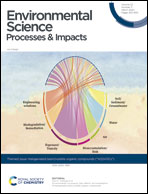Placenta as a target of trichloroethylene toxicity
Abstract
Trichloroethylene (TCE) is an industrial solvent and a common environmental contaminant detected in thousands of hazardous waste sites. Risk of exposure is a concern for workers in occupations that use TCE as well as for residents who live near industries that use TCE or who live near TCE-contaminated sites. Although renal, hepatic and carcinogenic effects of TCE have been documented, less is known about TCE impacts on reproductive functions despite epidemiology reports associating maternal TCE exposure with adverse pregnancy outcomes. Toxicological evidence suggests that the placenta mediates at least some of the adverse pregnancy outcomes associated with TCE exposure. Toxicology studies show that the TCE metabolite, S-(1,2-dichlorovinyl)-L-cysteine (DCVC) generates toxic effects such as mitochondrial dysfunction, apoptosis, oxidative stress, and release of prostaglandins and pro-inflammatory cytokines in placental cell lines. Each of these mechanisms of toxicity have significant implications for placental functions and, thus, ultimately the health of mother and developing child. Despite these findings there remain significant gaps in our knowledge about effects of TCE on the placenta, including effects on specific placental cell types and functions as well as sex differences in response to TCE exposure. Due to the critical role that the placenta plays in pregnancy, future research addressing some of these knowledge gaps could lead to significant gains in public health.

- This article is part of the themed collection: Halogenated (semi)volatile organic compounds (“X(S)VOCs”)


 Please wait while we load your content...
Please wait while we load your content...